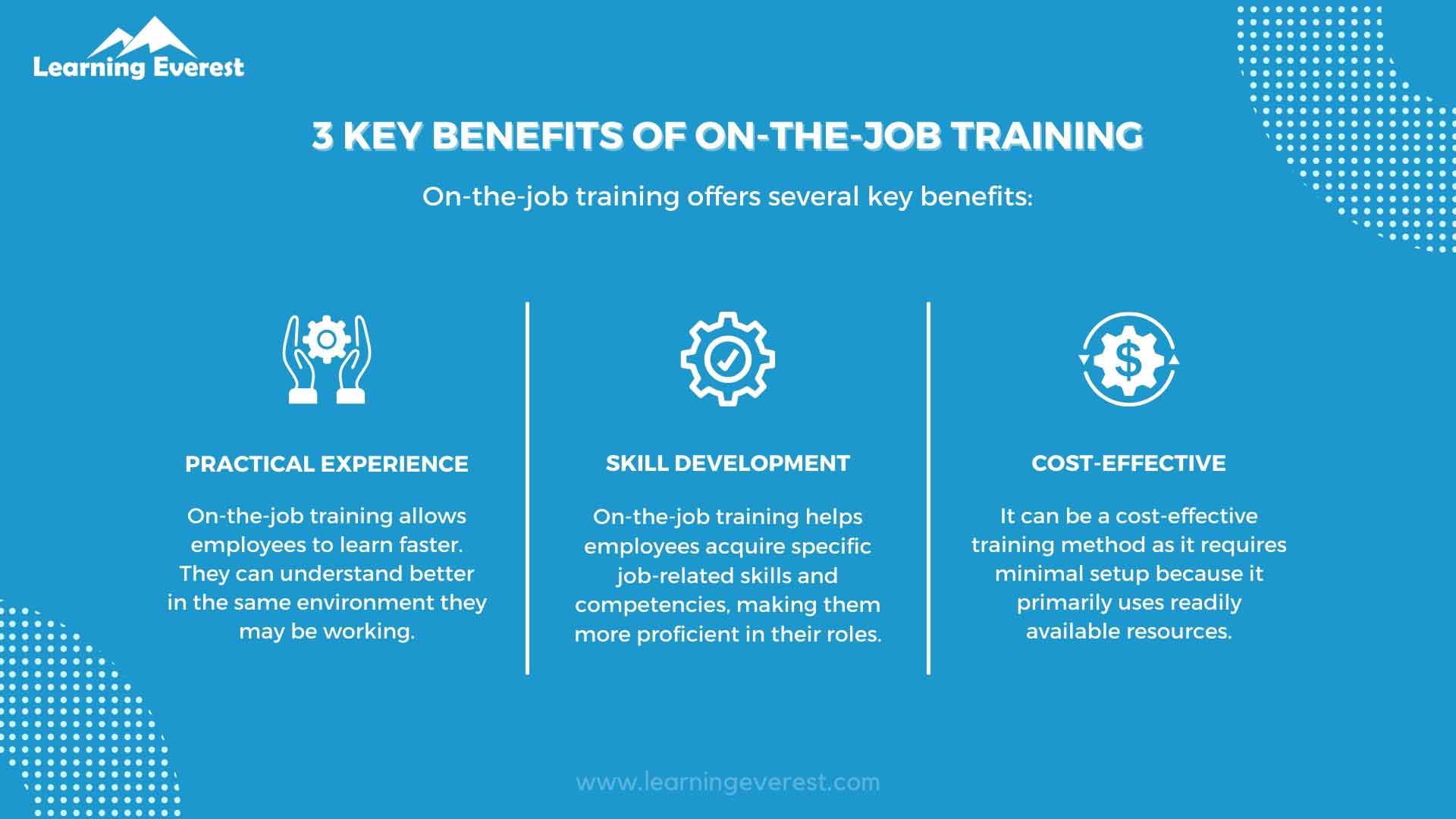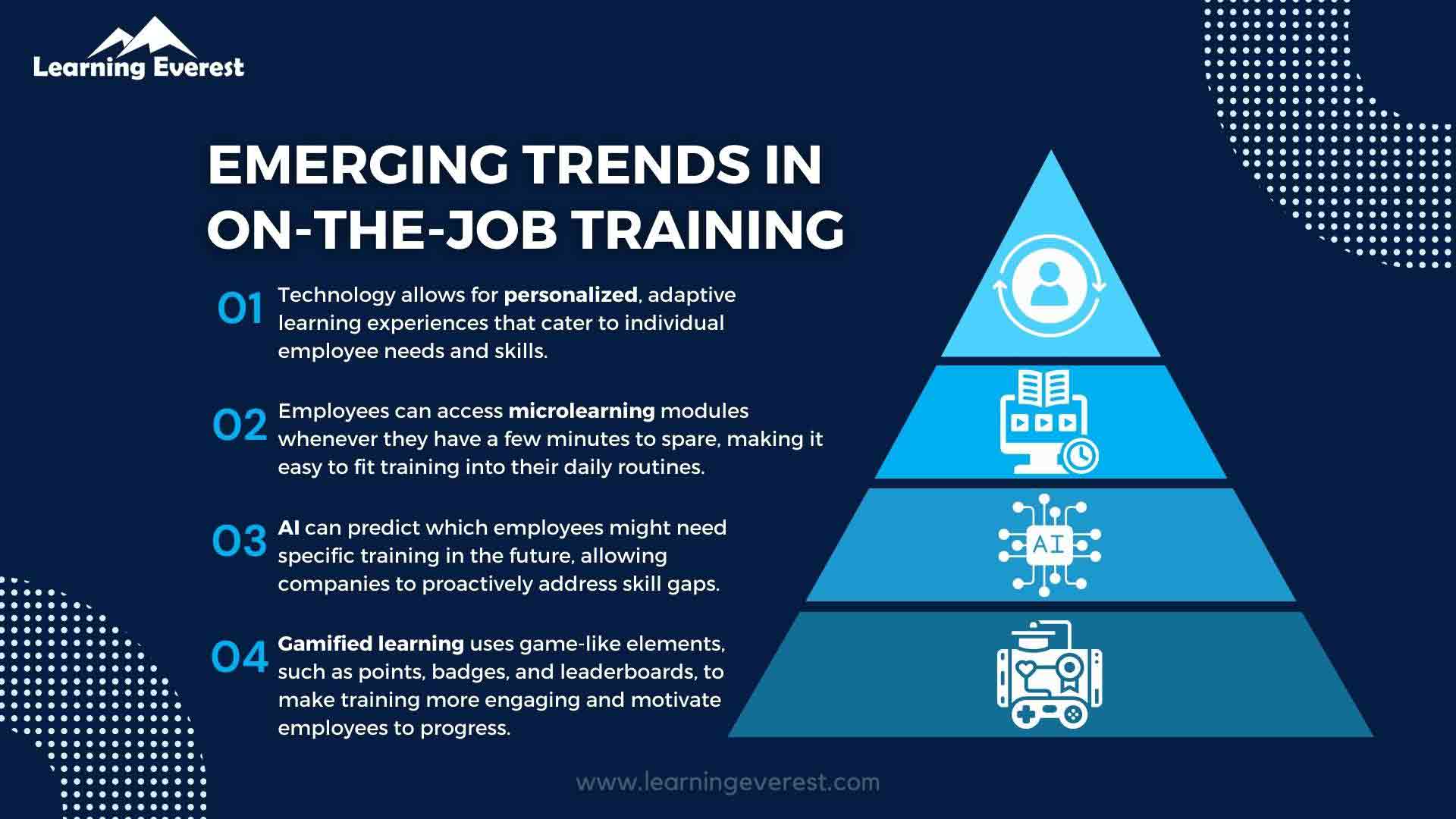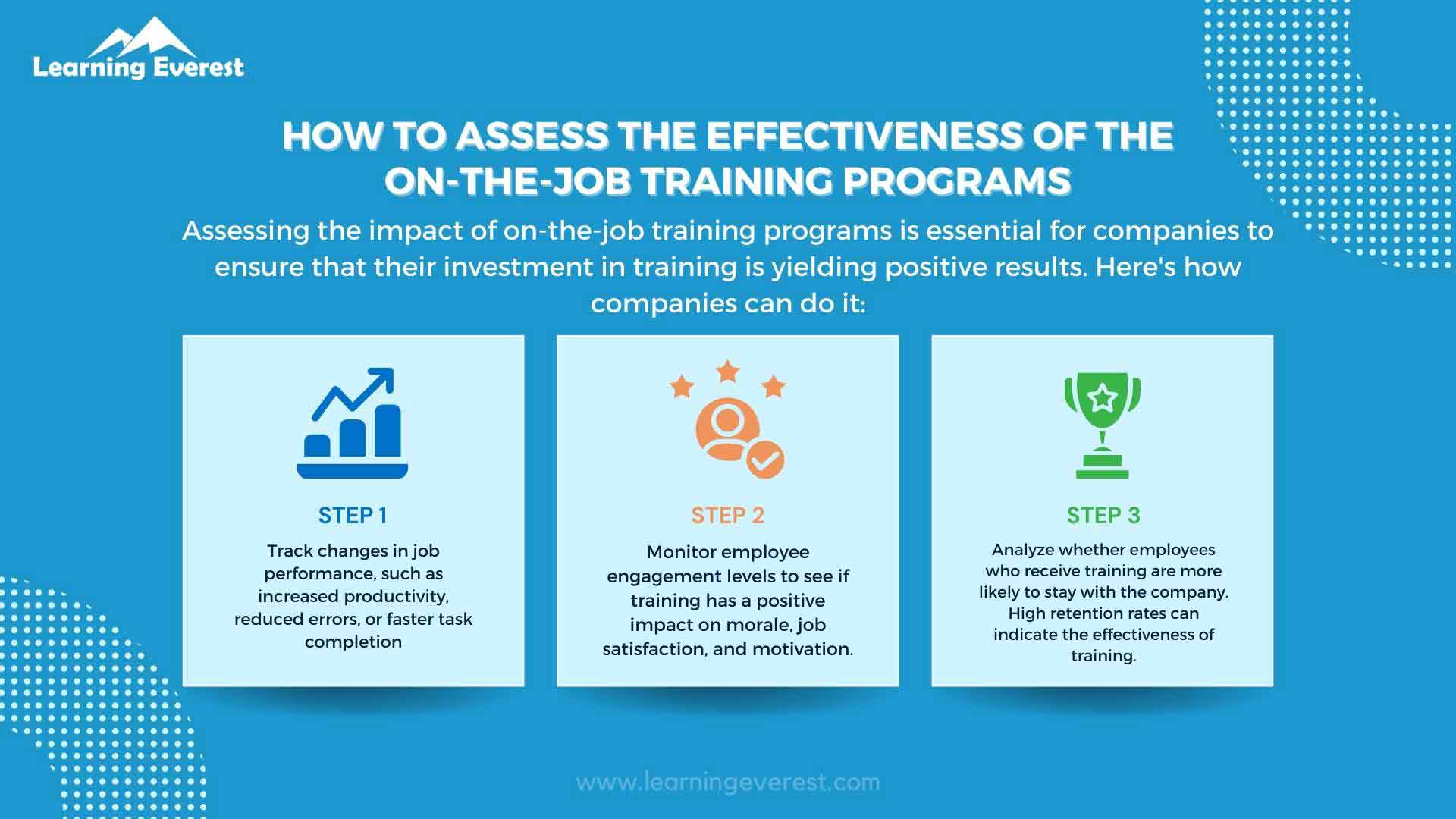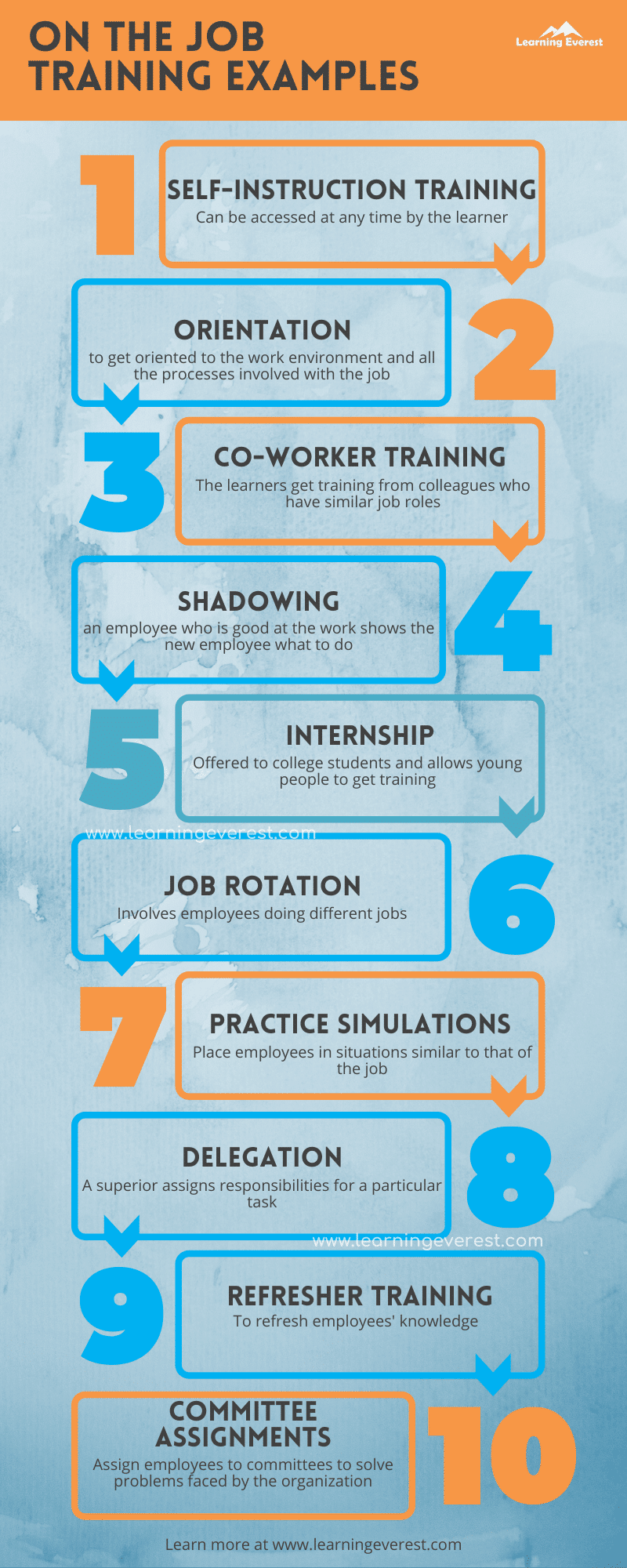On-the-job training is helpful because it provides hands-on experience for employees. The type of on-the-job training you receive depends on the company you're working for and your industry. Here are some On the job Training Examples.
On-the-job training is effective in the workplace. Professionals in all industries gain practical experience and technical knowledge in this process. This article will find out the different on-the-job training examples and understand how they are beneficial to you.
Benefits of On-the-job training
Benefits of on the job training include:
- On-the-job training allows employees to learn faster. They can understand better in the same environment they may be working.
- It requires minimal setup because they are primarily using readily available resources.
- Because on-the-job training is often carried out between multiple employees, it makes the bond between employees strong.

Benefits of On-the-job training
Tips for choosing on-the-job training
The following tips will help you if you have to choose from a variety of training programs:
- You have a variety of choices. Consider your industry and company culture to select a program to reach your objective.
- Communicate effectively to make the entire process more effective and enjoyable.
- Once you establish an on-the-job training program, review it regularly to make necessary changes.

Emerging Trends in on-the-Job Training
On the Job Training Examples
- Self-instruction training: Self-instruction training can be accessed at any time by the learner. These courses are often mobile compatible and allow learners to go through the course at their own pace. Learners can access this training at any point. It is mainly done using a digital device such as a phone or laptop. Employers can utilize many self-instruction platforms to make training accessible and efficient for their employees.
- Orientation: When an employee starts a new job, they will need to get oriented to the work environment and all the processes involved with the job. This type of training is commonly used for new employees and allows recruits to adapt to their working environment. They also get familiar with company-specific codes of conduct. Sometimes new employees might have to pass a test successfully.
- Co-worker training: In co-worker training, the learners get training from colleagues who have similar job roles. In this type of training, there is no hierarchy, and it helps the employees to know each other while they work together. It can occur during the normal workday.
- Shadowing: In a shadowing process, an employee who is good at the work shows the new employee what to do. The knowledgeable employee provides suggestions and feedback to help the process along. It promotes quick information transfer. Effective communication is one of the most influential factors that can make shadowing successful.
- Internship: The internship is often offered to college students and allows young people to get training. Internship on-the-job training is focused on empowering college students by giving them an experience of real work life. Thus, they can make the transition from college easier. Internship programs can help you find employees for your organization. Many internships lead to employment based on the performance of the intern. Intern roles are most commonly for people looking to gain experience before they begin applying for entry-level positions.
- Job rotation: Job rotation involves employees doing different jobs. In this process, the focus is on knowledge. It provides employees with knowledge of the entire process. But, always be careful. When you rotate knowledgeable employees, it may lead to less productiveness. Job rotations can be helpful for both new and existing employees. It can help employees understand that they are better suited for another role.
- Practice simulations: Practice simulations place employees in situations similar to that of the job. The scenarios are often close in likeness to the real deal. It can train new employees and upskill existing employees by immersing them in new situations.
- Delegation: Delegation is an on-the-job when a superior assigns responsibilities for a particular task. An employee is given the authority to complete the task autonomously. The superiors may not guide a task assigned. However, they offer guidance in certain situations. There must be a high level of trust between a manager and a team member. If you’re a manager, select tasks that you’re confident that the employee can handle.
- Refresher training: Refresher training serves to refresh employees’ knowledge. These types of training are required after changes in technology. It helps to keep the workforce up to date.
- Committee assignments: Employers assign employees to committees to solve problems faced by the organization. The members of a committee will work together to achieve a common goal. Thus, there is a team spirit.

How to assess the effectiveness of the on-the-job training programs
Now that you know about different types of on-the-job training, ensure that you choose the best one that suits your requirements and develops a learning culture that is the best for your organization.
Infographics

On the job Training Examples
Knowledge Check!
Frequently Asked Questions (FAQs)
What is meant by on-the-job training?
On-the-Job Training refers to the training given to a paid employee while he or she is engaged in productive work and provides skills essential to do the job.
What are the benefits of OJT?
Benefits of on the job training:
- Faster training with real experience.
- Faster adaptation to a new job.
- Trainees can perform simple job tasks from the beginning.
- Retain good employees.
- Attract the right people.
- Team building.
What is on and off-the-job training?
Off-the-job training happens at a place other than the job location but, on-the-job training takes place in the work building or job site





